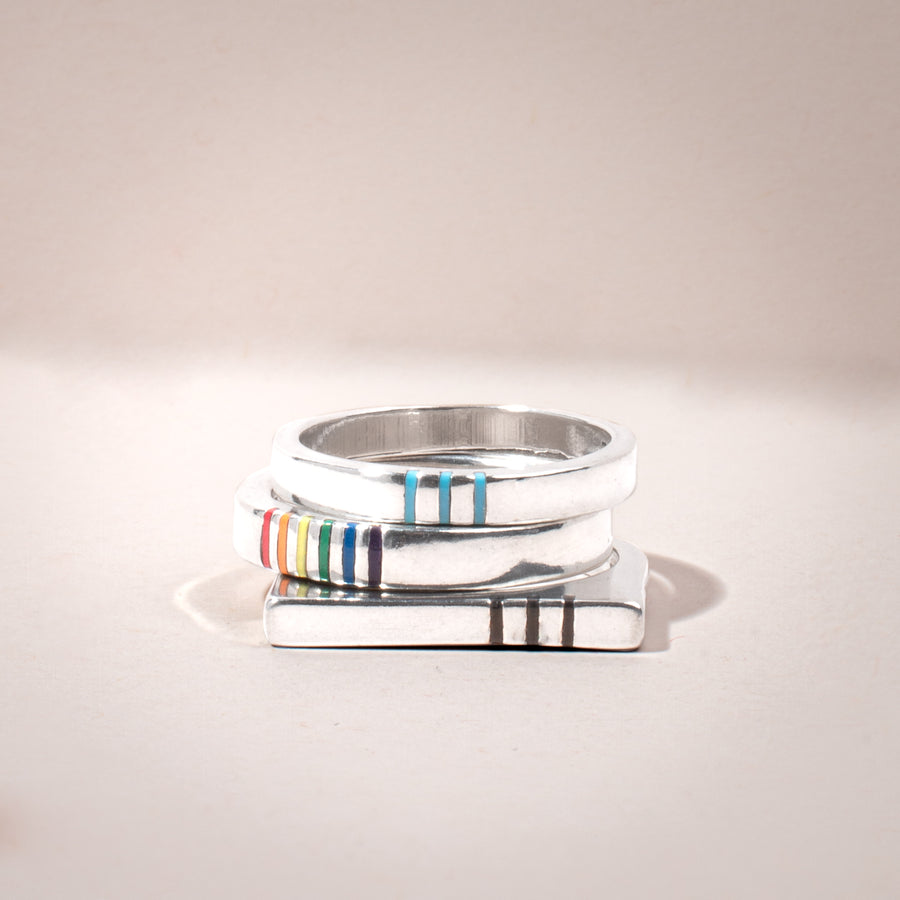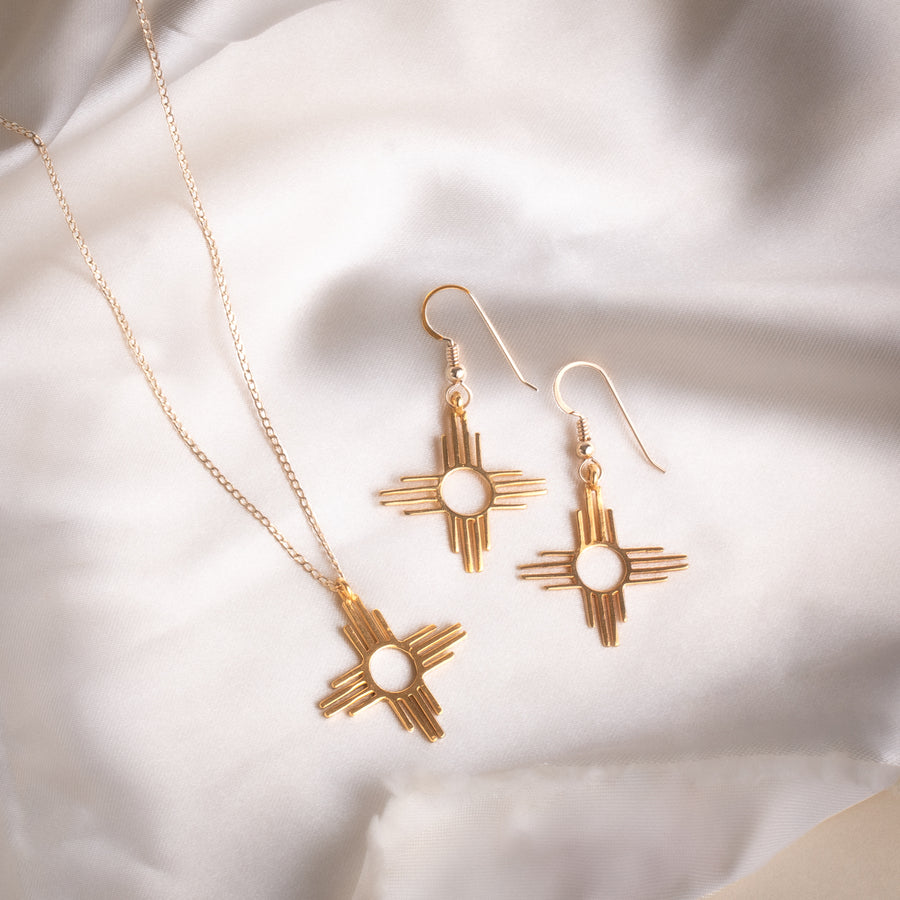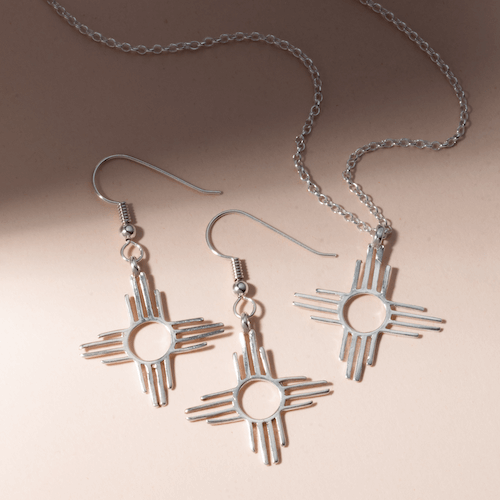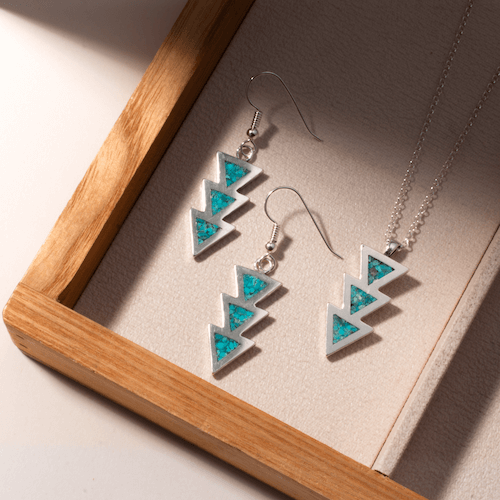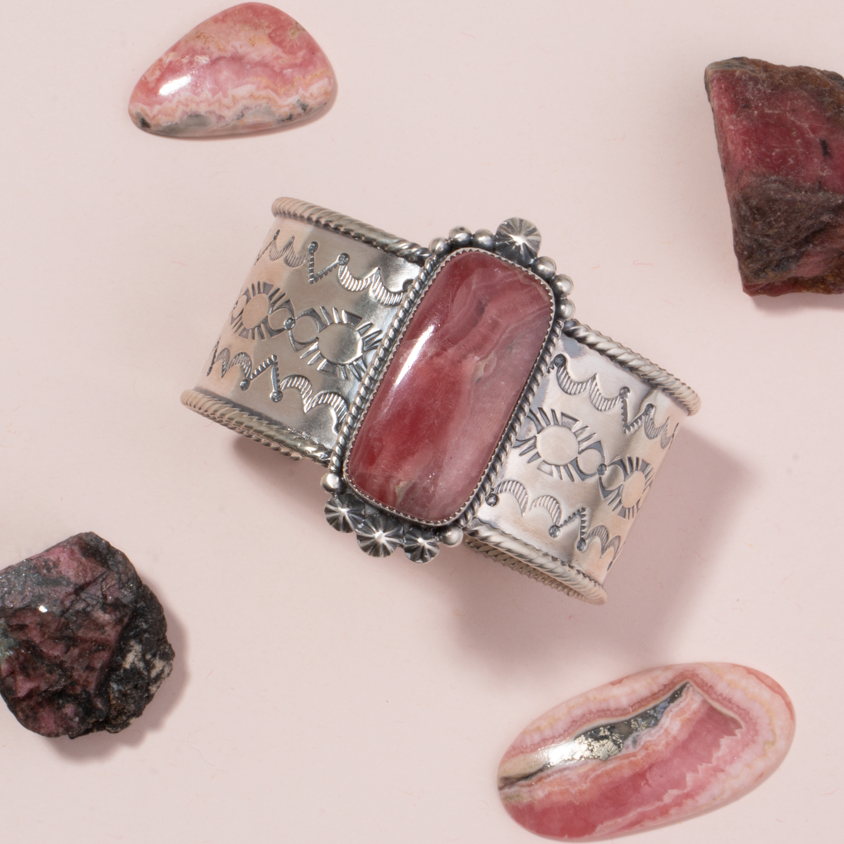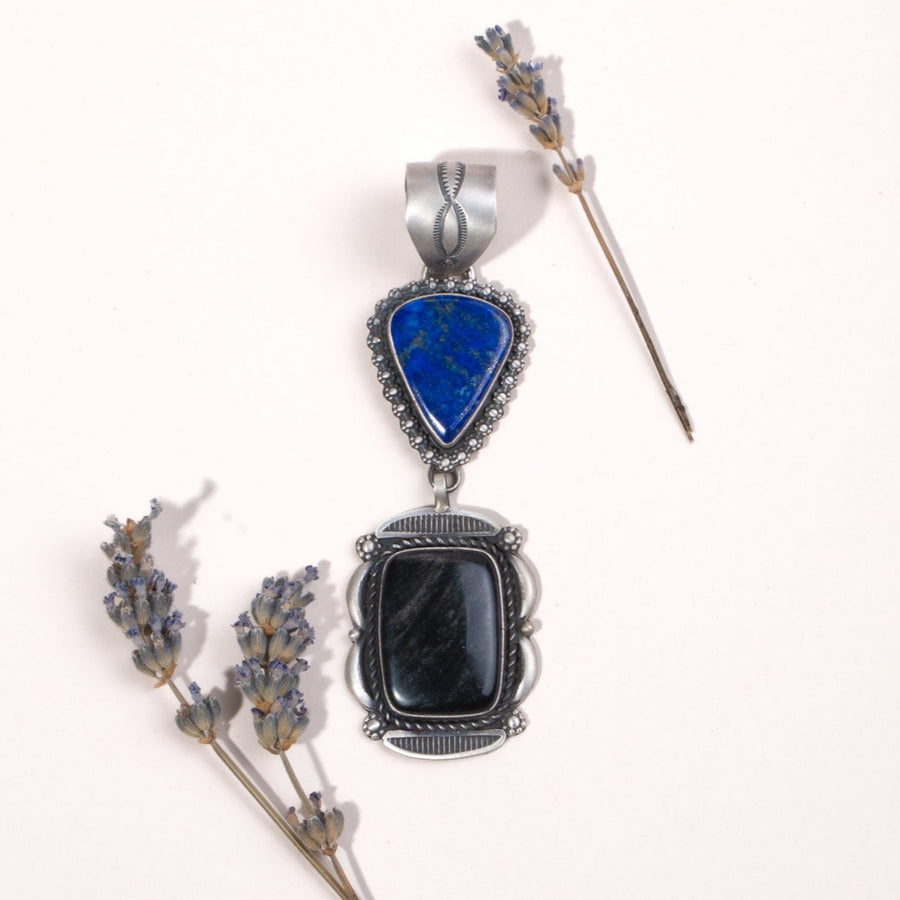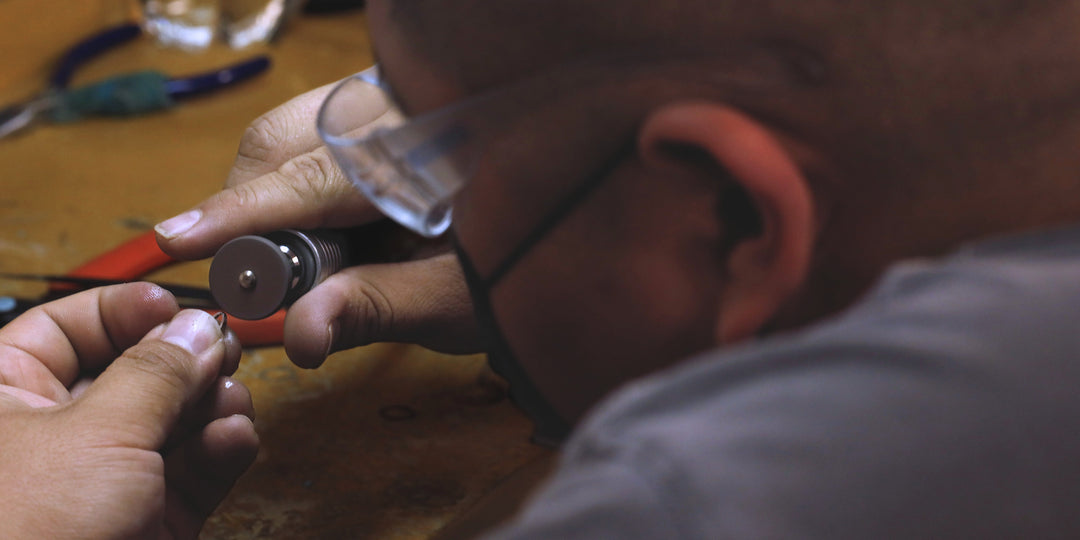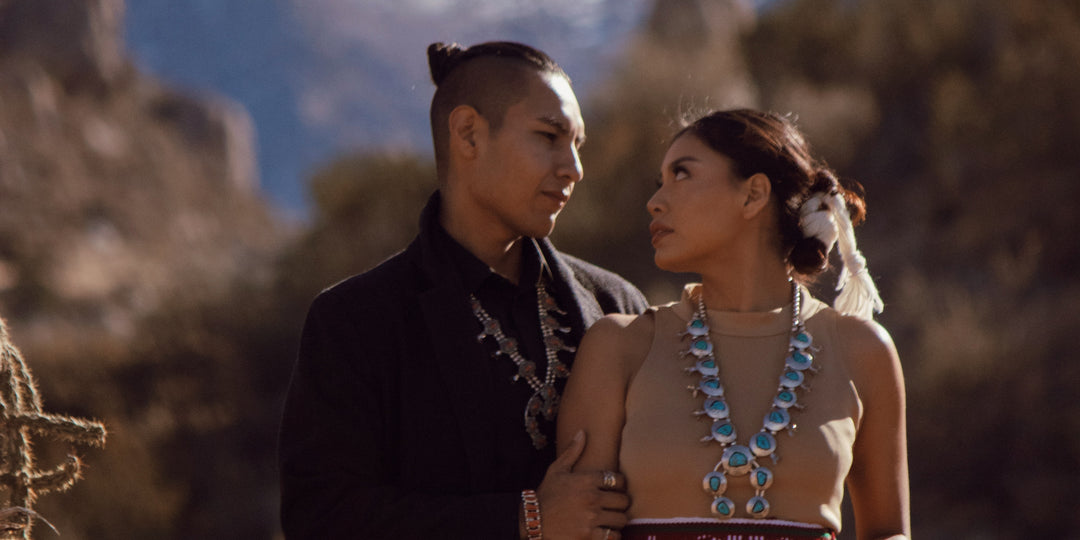Shumakolowa

Zuni Dragonfly Inlay Pendant
Shumakolowa is the Zuni word for dragonfly. Pronounced “shoe-mu-koh-low-wa,” the Zuni dragonfly is an iconic symbol often used in fine Native American art. The dragonfly is a sacred creature for many Native tribes in the Southwest. The appearance of a Shumakolowa is often the harbinger of rain or blessings. Sometimes the name is misspelled as Shuma kolowa.
Shumakolowa is often represented in Zuni jewelry as earrings or pendant necklaces. They have become popular pieces for modern collectors. Artists from different Native tribes also like to use the dragonfly style in contemporary designs. Authentic Native American jewelers will create Shumakolowa designs with sterling silver, and complete it with turquoise, coral, and shell inlay.
The Zuni Dragonfly Myth
There is a popular Zuni myth about how the Shumakolowa were created. This myth was passed down as an oral tradition for centuries, and was first written down in 1883. In 1972, famous New Mexico author Tony Hillerman wrote a short story, called The Boy Who Made Dragonfly: A Zuni Myth. Here is a shortened version of this beautiful story:

There was once a village that suffered a couple of hard years, they were running out of food, so they left their home in search of better land. The village elders didn’t realize that they had left behind a young girl and a young boy. The girl was upset at having been left by the village. Wanting to make her feel better, her brother made her an insect doll from corn and other grasses. This doll came to life, as it was a messenger from the gods. It was sent to teach the two children how to please the gods and gain their favor.
However, the girl soon became very ill. The corn-doll flew away to the south, seeking the corn maidens to help the girl recover and give comfort to the children. The corn maidens gave the children food and said that the children were beloved by the gods. They were destined to become great leaders, the mother and father of their people.
The land grew fertile again and the people returned to their village, finding the boy and girl they had left behind. Because they gods had visited the children and blessed them, they became great leaders of their people, just as the corn maidens had foretold.
But the corn-doll was lonely and wanted a companion. He went to the boy and asked him to make another doll so that he would not be alone. He asked that the boy and his people call him, his companion, and all of their offspring, dragonfly. Because the corn-doll had helped him and his sister, the boy agreed. He made a new corn-doll and it too came to life. The boy told the dragonfly:
“I will paint your image on sacred things to symbolize spring and the spring rains, which will bring health to my people. I will paint your companion as a symbol of summer and the summer rains.”
Today the black, white, and red dragonfly comes in the summer with the blooming of the corn. He is followed by his companion, the green dragonfly. Together they arrive with the rains, bringers of life and good health for the spring and summer.”
